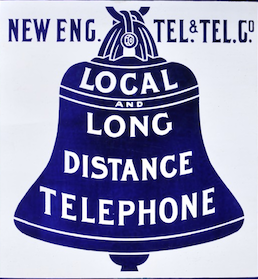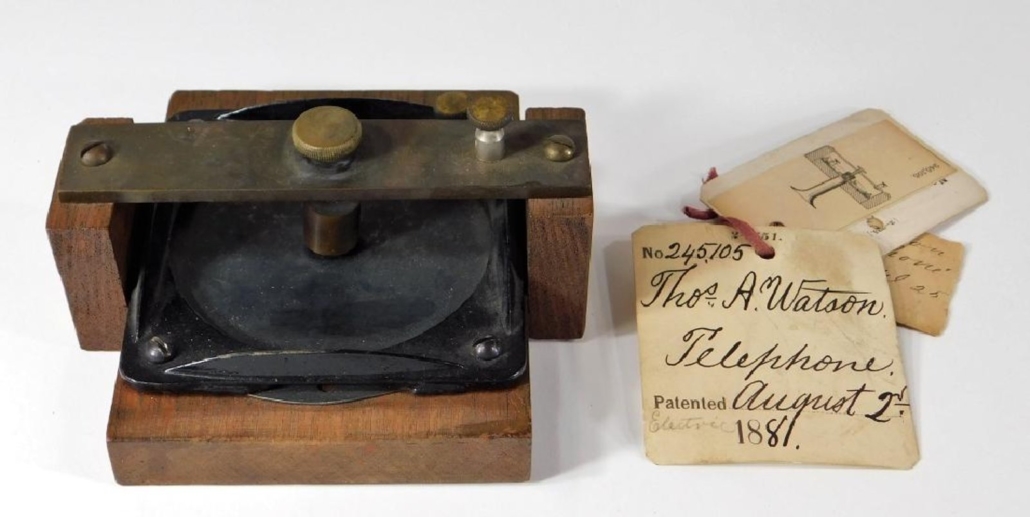
NEW YORK – Have you seen the TV commercial where Alexander Graham Bell is at a play, sitting in the balcony and annoying everyone around him because he’s talking on the phone? The caller got a wrong number and Bell tells him, “No, no, my number is one. You must want two. Two I say!”
It’s funny, and it begs the question: Just what were the earliest phone numbers? The people who might be able to answer that question are the thousands of folks around the world who collect antique and vintage telephones and related items. It’s a genre of collectible that’s not in the top tier, numbers-wise, but those dedicated to it tend to be fiercely loyal.
It turns out, people have been collecting telephones for as long as telephones have been around. That takes us back nearly 150 years, to 1876, when Bell invented and patented the phone and then displayed the first model at the Centennial Exposition in Philadelphia. Today, telephone collectors come from all walks of life, young and old. Their ranks include current and former telephone industry employees or anyone who thinks that old phones are just plain cool.
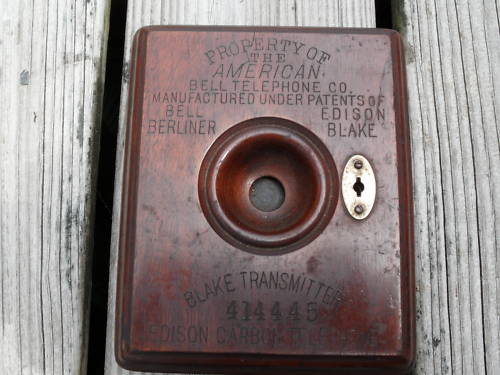
The very early wood wall telephones from the 1880s, marked Charles Williams, Jr., or American Bell (the latter named after its founder), are, of course, highly collectible, because they date back to the very dawn of telephony. But interest in them tapers off once you get up to the early 1900s thru World War II, mainly because few people are still around who remember them.
Candlestick phones – so-named because the transmitter stood on a stand, called a “candlestick” for its shape – burst on the scene in the 1890s and stayed popular thru the 1920s. They were smaller and lighter-weight than their wooden predecessors, and were packaged in three parts. When not in use, the receiver hung on a hook with a switch (called a “switchhook”).
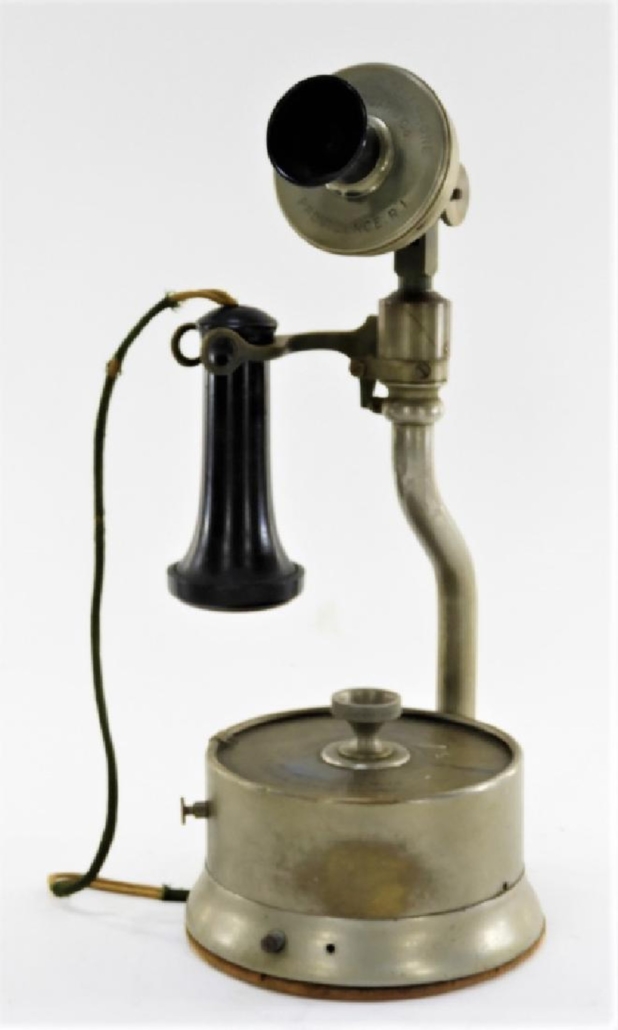
Candlestick phones were designed to sit on top of a desk. Wires connected the receiver to a box below it, which held the ringer (or bell) and magneto. The early candlestick phones had no dial – the operator had to connect a call. They were luxury items for their time, and were smartly made for the era’s well-to-do. Literally dozens of companies made them initially. Later they were mass-produced. The early, nickel-plated candlesticks are the most desired by collectors.
Desk sets are what most people collect today. They range from the early 1920s models, with ringer boxes, to the Ericofon, Princess and Trimline phones of the 1960s and ‘70s. The desk set phones are the most ubiquitous, as tens of thousands were produced to meet soaring public demand. But they also have a very high nostalgia factor, and some are quite beautiful, like the Kellogg Art Deco Masterpiece series phones.
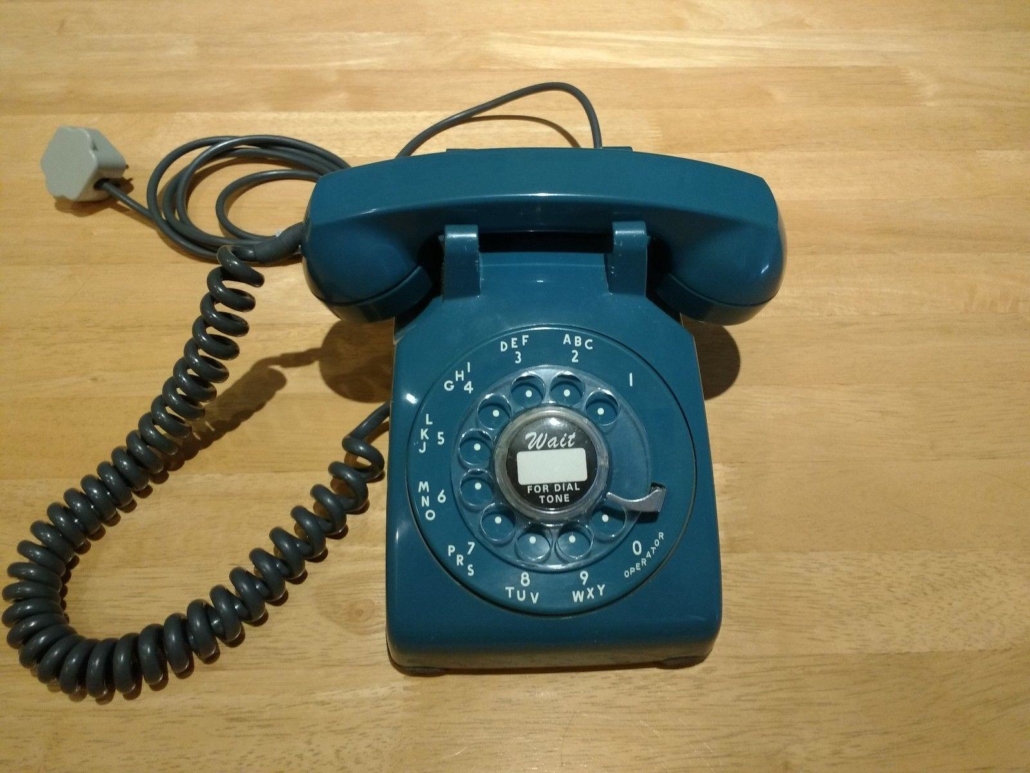
The most commonly found 20th-century desk set phones are the rotary dial models, like the Western Electric 202 (from the 1930s), the 302 (from the ‘40s), the ubiquitous 500 sets (1960s and ‘70s). Western Electric is a huge name for collectors, but there are other makers in high demand, too, such as Automatic Electric (maker of the AE40 phone), Kellogg Switchboard & Supply, and Stromberg Carlson. Most desk set phones were made of bakelite, plastic or metal.
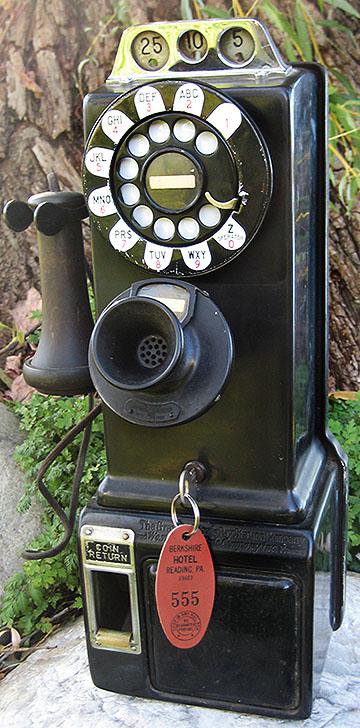
Pay phones are collected, too. Often called “pay stations,” pay phones range from the early wooden “silver dollar” model to the classic “three-slotter” (accepting nickels, dimes and quarters). Other collectible phones include novelty phones, European phones, wall phones and intercoms. The related items include porcelain signs (but watch out for fakes), switchboards, phone booths, telephone manufacturer catalogs and number cards, photographs and directories.
Here are some questions collectors ask themselves when considering buying an antique or vintage telephone:
- Is it complete? A savvy collector will know, for example, that an old candlestick phone should have a green cord. Many old phones – especially those that were leased out to companies – were often in the shop for rehab or repair, so the equipment isn’t original.
- What is its condition? Is the Bakelite chipped or cracked? Is there damage to the original finish or paint? If the answer to these questions is yes, it may mean reduced value.
- Is it authentic? Believe it or not, there are frauds and phonies out there reproducing parts (or even entire phones!), and sometimes it’s hard to tell the fake from the genuine article.
- How rare is it? Some prototype phones were manufactured in such small quantities that not many survived, and these are naturally coveted by collectors. Also, look for variations, like the Western Electric 2AB phone with letters and numbers stamped on the fingerstop (it’s rare — buy it!).
- How are its aesthetics? Mediterranean blue and mahogany brown plastic phones from the 1950s are in huge demand among collectors, because they display so beautifully. The patina of the nickel plating on an old candlestick phone is another good example.
- Is it in working condition? Not everyone cares whether their antique or vintage phone is able to send and receive calls. For them, it’s a piece of history or a slice of nostalgia, plus they adhere to the “as-found” rule that a true antique should not be adulterated (as in reconditioned to perform). For others, it’s a hoot that their old phone actually works.
On August 4, Bruneau & Co. Auctioneers in Cranston, Rhode Island, conducted an auction dedicated entirely to antique and vintage phones and related items. Items were featured from two regional chapters of the Telephone Pioneers of America Museum: the William J. Denver chapter #20 museum in Providence, R.I., and the Excelsior Chapter #98 in Buffalo, New York. The sale’s top lot (shown at top of page) was a Bell and Watson prototype phone, accompanied by original 1881 patent paperwork and a tag with Thomas A. Watson’s handwritten name and the date August 2, 1881 ($40,000).
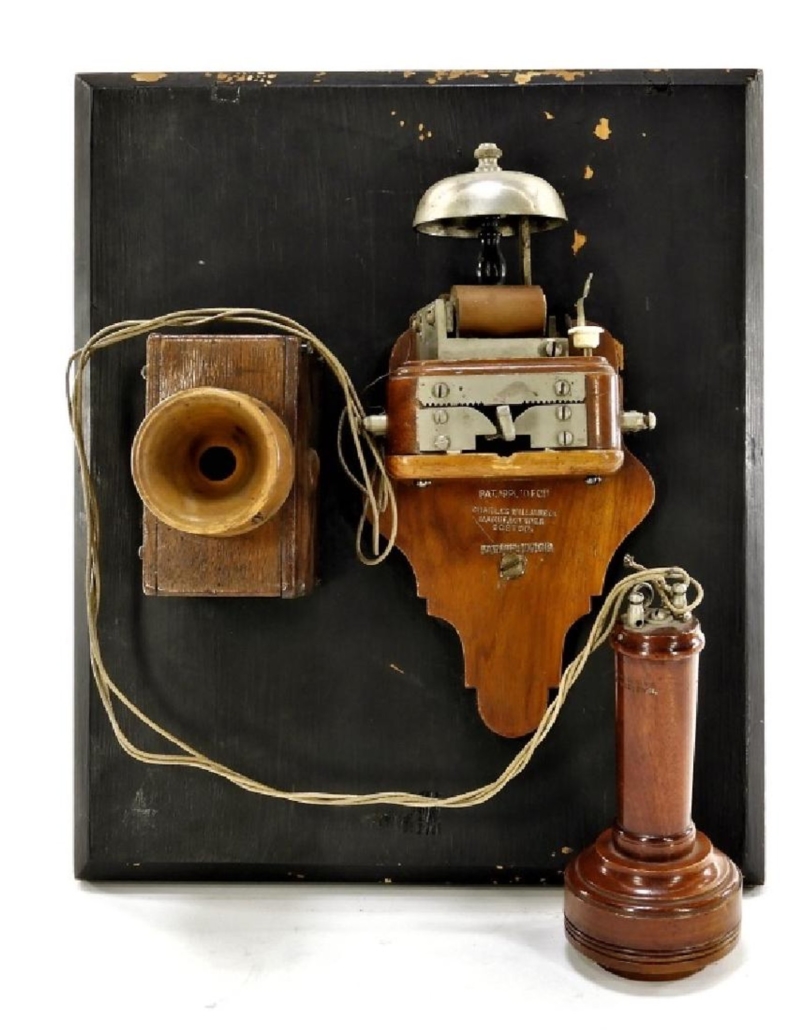
Other top lots included a rare circa 1876 Bell Butter Stamp magneto telephone originally installed at the residence of Malvina K. Wetmore in Newport, Rhode Island in 1891 ($27,500); the telephone from President Dwight Eisenhower’s Newport (R.I.) summer White House home, marked “Bell System” and “Made by Western Electric” ($1,375); and the first phone/emergency call box ever installed in the Yukon Territory in Canada, at the time of the Gold Rush, around the turn of the century, circa 1900 ($2,500).
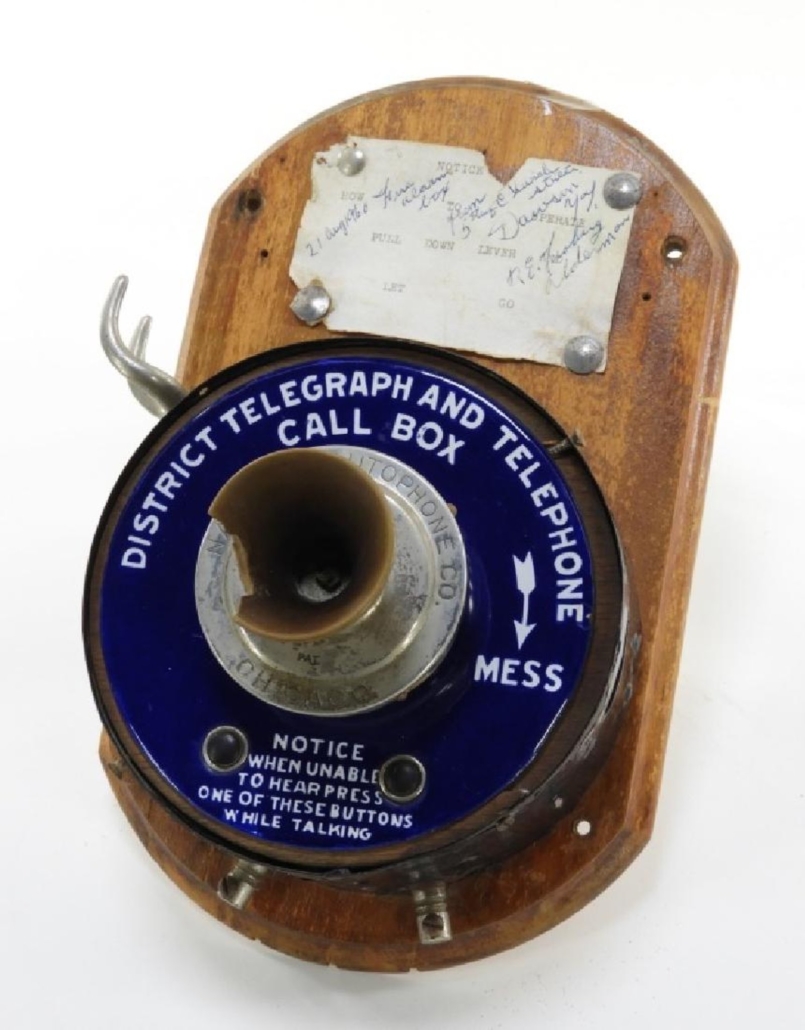
Greg Sargeant, a member of the Antique Telephone Collectors Association and Telephone Collectors International, as well as the moderator of the Classic Rotary Phone Forum on the internet, identified several hot items collectors are clamoring for right now. These include:
- 1950s-era 500-series colored plastic phones in desirable colors like Mediterranean blue and mahogany brown (“but make sure that all parts date-match; that’s important”).
- Almost anything from the 1890s and before (“especially if they haven’t been upgraded, as originality is a key factor, even more important than condition”).
- Mid-1960s 10-digit touch-tone phones (“look for the ones with no star and pound key; they’re very rare”).
- Early 1940s colored phones (“in very high demand right now”).
- Blake transmitters from the 1880s (“they’re selling in the $5,000 range; even replicas can fetch $400”).
- Gray’s pay station phones and early manual phones (“Elijah Bell patented the telephone around the same time as Bell, lost out to Bell in terms of whose patent was the more recognized, but then went on to found Western Electric and served as Bell’s manufacturing arm, so he did very well for himself in the end.”).
- Bell System equipment that pre-dated Western Electric, from the early 1880s, to include anything by Charles Williams and Post & Company, makers of the “coffin” sets, so-named for their shapes and made from burled walnut and cherrywood.
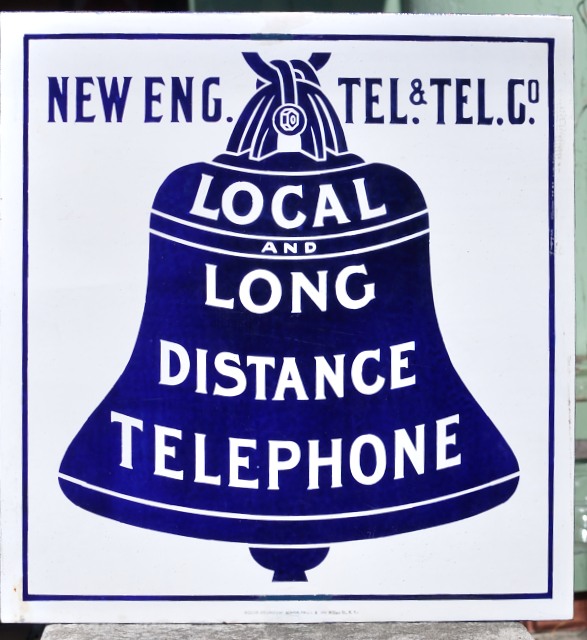
Anyone interested in getting into collecting antique and vintage telephones is encouraged to check out and join one of the following: the Antique Telephone Collectors Association, the Telephone Collectors International, the Telecommunications History Group, and the Telecommunications Heritage Group (UK).
Click to view antique and vintage telephones available in sales listed on LiveAuctioneers.
# # #


